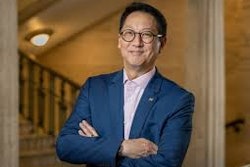Higher Education In INDIA
A brief historical and contemporary overview
India has an old tradition of knowledge and learning. In fact, a well-established system of higher education functioned as early as 1000 B.C. In that system, the construction of knowledge, the beliefs on which knowledge is based, basic concepts and the organization of learning are very different from the European tradition. The Indian system is validated by the fact that it sustained Indian civilization for centuries.
The European system of higher education was introduced to India by the British in 1857 with the establishment of universities for European education in Bombay, Calcutta and Madras. Although modeled after the University of London, these universities were not meant to be institutions for the advancement of knowledge, or full-fledged centers of higher leaning. The British government had established them with two limited objectives:
nto introduce the Indian elite to European culture, and thus, to colonize the country culturally;
n to produce a cadre of Indians equipped to serve the British administration in India and to practice the professions of law, medicine and teaching, as required by the British.
The emphasis on imbibing European culture and knowledge was so pronounced that universities never really encouraged a spirit of critical inquiry or independent thinking so vital to the advancement of knowledge.
Initially, the British had accepted the indigenous system of knowledge, and allowed institutions for indigenous education to exist. But with the establishment of the first three universities, the British declared their preference for European knowledge, instituted policies that favored European education and withdrew their support for indigenous institutions. English was established as the only medium of instruction permitted for university education.
British economic policy, similarly, withdrew support for indigenous crafts, skills and professional practice, although India was highly advanced in fields such as textiles, architecture, waterworks and medicine. Together, these two policies steadily created a climate in which indigenous knowledge was rejected and links with traditional learning were broken.
Access to higher education was restricted because facilities were meager. In addition, British policies were self-consciously elitist. Whenever it was asked to expand facilities, the British government would argue that the benefits of privileges provided to the elite would eventually trickle down to the masses. Elitism was also encouraged by the limiting of instruction to the language of the rulers.
During this period, universities were statutory bodies closely controlled by the government. The governor of a province was the chancellor of all universities within the province under his jurisdiction. He appointed the vice chancellors, his seconds in command who were directly in charge of individual universities. Government nominees sat on the all-important bodies — such as the campus senate, the executive council, the academic council and committees for the selection of faculty and administrative staff.
The Indian Response
Indians valued European higher education as the means to acquire employment in the British establishment; to enter the professions of law, medicine and teaching as practiced under British rule; and to gain access to European social circles. They valued the English language as a window on the Western world. And they acknowledged the fact the European education had inspired the nationalist movement for freedom.
But they also felt that policies pertaining to university education in India denied Indians the opportunity to advance, distanced them from their own culture, restricted economic growth and bred continued dependency on Britain for knowledge. The determination to free university education in the country from all these handicaps shaped nationalist dreams and aspirations for higher education in independent India.
When India acquired independence in 1947, education was chosen to be the principal instrument for the country’s transformation from a poor, dependent, economically and technologically backward imperial colony into an advanced nation. In the larger design for this transformation — which calls for economic development as well as extensive social and political change — higher education was charged with two major responsibilities.
First, higher education was to provide the manpower required for economic growth and for an efficient delivery of services such as healthcare, transportation, communication and community welfare — considered basic to a developed society. And, it was to contribute to the advancement of knowledge in the manner required to place India on par with the developed world.
Second, higher education was to function as an instrument of equality. It was recognized that these objectives were the very opposite of those that universities had served in British India.
Nevertheless, it was believed by instituting appropriate policies and facilities it would not be difficult to gear universities to the new objectives.
To enable them to advance knowledge and to produce the manpower required, universities in independent India have been equipped with facilities for undergraduate as well as graduate education, in the full range of disciplines available at universities in developed countries. At least one agricultural university has been established in each state. In addition, a new category of national-level apex institutions — such as the Indian Institutes of Technology and the Indian Institutes of Management — have been established to provide world-class education in fields such as engineering, technology, management and medicine, which are considered critical to development.
Today, India no longer depends on developed countries for higher education or for qualified manpower. It has the world’s third-largest pool of scientifically and technically trained personnel. The products of Indian higher education are accepted for employment worldwide. Students from other countries, particularly the African countries, come to India for higher education studies. Research, which was altogether absent in British India, is now well established.
Until about two decades ago, there was euphoria over all this. Since then, however, serious problems have surfaced. For instance, highly qualified Indians — particularly the products of prestigious institutions such as the India Institute of Technology — have been migrating to Europe, North America and recently to Australia. This “brain drain” was initially celebrated as India’s successful entry into the international market for employment. But it is now resented. There is a feeling that while the migrants prosper, the country is deprived of returns from its massive investment in technical, technological and professional education. Institutions of higher education, particularly the apex institutions, are blamed for their failure to cultivate a commitment to serve the country among their students.
Even more serious is the problem of the underemployment and unemployment of graduates. This phenomenon is generally explained away with the statement that the economy has not grown at the pace, and on the scale, required to absorb all the manpower that the institutions of higher education produce. Yet, many positions in industry, in government administration and even, surprisingly, in educational institutions lie vacant for want of suitably trained persons. This is in part because qualifications for employment are narrowly and rigidly defined. But it is also due to a measure of mismatch between what higher education produces and what the country needs.
Higher Education as an Instrument of Equality
To equalize access, the bottom line of the government’s policy is to provide opportunities for higher education to all those who aspire to it. To serve this commitment, facilities have been massively expanded. Fees have been kept low. The vernacular languages have been introduced as the media of instruction. Several universities offer fee waivers to women students. Further, in a bold move to extend access to sectors of the population known to have poor access to university education, the government instituted a policy of “reservations.” According to this policy, it is mandatory for all institutions of higher education that receive government funding — and almost all do — to reserve a quota of admissions as well as faculty and administrative positions for:
n the castes that are considered to be low in the caste hierarchy and that were therefore traditionally denied the right to education, and
n the aborigines or tribes who were traditionally excluded from education because they functioned outside the mainstream of urban and rural life.
Together, all these provisions have yielded spectacular growth. In 1950-51, when the country’s first five-year plan was launched, there were 27 universities serving 174,000 students. By 1997, there were 229 universities, more than 8,000 colleges and 6.4 million students, making India’s system of higher education the second-largest in the world.
To finance this expansion, the government of India has consistently increased its share in the total expenditure on higher education — from 49.1 percent in 1950-51 to more than 90 percent today. Nonetheless, government allocations to education have declined in India to the point where they are the lowest in South Asia.
It is significant that despite these statistics, the enrollment in higher education in India today accounts for barely 6 percent of the relevant age group, as compared to 30 percent in Europe and 37 percent in the United States. This is partially because the expansion has been offset by the growth of the population in the relevant age group.
India’s experience illustrates how difficult it is for developing countries to bridge gaps and to keep pace with the developed world.
The Pressure of Numbers and the Decline in Quality
Although they have been increased phenomenally, facilities fall short of demand. For some professional programs, there are more than 500 applicants per seat. The unrest this generates is so intense that in some states, the government has had to administer admissions. To meet the demand, facilities are constantly stretched beyond capacity. As a result, quality suffers. For instance, when classes were small, teachers were able to encourage questions and stimulate interaction, in spite of teaching by the lecture method, extensively used in the country. But now, as they lecture to large numbers, this is no longer possible.
Quality is also affected by the fact that few students are academically motivated. Most pursue a degree for the status it carries and because it is a required qualification for employment. Students in the professional stream take courses that are relevant to their future work, and regardless of their initial attitude, may grow to be interested in those courses as they move on. But more than 70 percent of the students are enrolled in the disciplines of arts, science and commerce, in courses that have little relevance to the occupations they will eventually take up. Students are aware of this and, therefore, indifferent, certificate oriented and examination driven, as are their teachers.
While quality and relevance thus suffers, equality does not fare any better. In fact, new inequalities have emerged. Professional education has steadily grown in prestige. Among professional institutions, the new apex institutions are considered to be in a class apart. It is significant that the students who succeed in the competition for admission to professional courses in general, and to these institutions in particular, largely come from more well-to-do, educated homes and superior schools.
The privileges of wealth are visible in the fact that both private colleges that charge hefty fees and European, North American and Australian universities that peddle expensive courses have no dearth of students.
Another sign is that the parents who can afford to do so send their children abroad for further education. Until recently, this happened after completion of the first degree. Now, as quality declines and admission to better institutions has become highly competitive, many students are sent abroad for the first degree.
The effort to provide equal opportunities for higher education is also defeated by the fact that facilities for schooling are highly uneven and unequal. Most significant is the finding that barely 65 percent of children in the relevant age group complete primary school and that less than 30 percent complete high school.
The reservations system has enabled the disadvantaged castes and tribes to advance significantly, in education as well as in employment, but the process has become highly politicized. For instance, the performance level of candidates admitted to reserved seats at institutions such as the Indian Institute of Technology is significantly lower than the cutoff point for open admissions, but attempts to bridge this gap with remedial courses are rejected as discriminatory.
In the Indian Parliament, these institutions have been accused of trying to maintain international standards at the cost of addressing national realities. And most institutions of higher education are neck deep in litigation over reserved admissions, as well as reservation of faculty and administrative positions.
In the face of this scenario, higher education in India can hardly claim to have functioned successfully as an instrument of equality. Yet, there is visible, as well as statistical, evidence of a complete transformation of the structure of opportunities in the country — for the traditionally disadvantaged castes and tribes, for women and for the classes that not very long ago had little or no access to higher education and to the futures that education opens up.
Lessons from India’s Experience
There is much to learn from the Indian experience, particularly for developing countries — countries served by European education but rooted in non-European cultures.
European higher education implanted in non-European societies has often smothered or displaced indigenous knowledge, technologies, skills, values and other elements of the indigenous culture. Developing societies with non-European cultures are now beginning to discover that it is not wise to anchor plans for development in European knowledge and technology alone. It is now recognized that indigenous knowledge, once dismissed as primitive, has much that is of global value and deserves to be retrieved.
The marketplace is a powerful force in making higher education relevant to employment. But like a cancerous growth, it can destroy love for learning, crowd out philosophical and literary pursuits, stifle the advancement of knowledge and render both theoretical and liberal education irrelevant. With the globalization of the economy, developed societies tend to impose their manpower needs on the higher education systems of less-developed societies and to push the latter into the background. These problems have to be consciously addressed.
The internationalization of higher education, generally understood as the inter-country exchange of students and faculty, has many other facets:
the growth of an international market for educated manpower and the challenge to equip students with transnational competencies so that they can compete in this market;
international partnerships and networking for the advancement of knowledge;
the phenomenon of individual scholars as well as individual countries promoting their vested interests to the disadvantage of the larger endeavor;
and the marketing of courses by universities in countries other than their own and consequent issues of ownership, partnership, accreditation, acceptability and accountability.
These are a few of the lessons from the Indian experience that are pertinent to an international dialogue.
— The preceding article was excerpted from “The Transformation of an Imperial Colony into an Advanced Nation: India in Comparative Perspective,” by Dr. Chitnis, which appears in Higher Education in the 21st Century: Global Challenge and National Response, an online publication of the International Institute of Education edited by Philip G. Altbach and Patti McGill Peterson. This article is reprinted with permission. To view the full report, visit www.iie.org/svcs/publications.
© Copyright 2005 by DiverseEducation.com


















